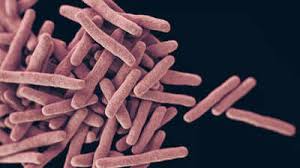Nightmare Bacteria:

According to scientists at the US Centers for Disease Control and Prevention (CDC), drug-resistant ‘nightmare bacteria’, driven by the NDM gene, are spreading faster than ever in the United States.
- Nightmare Bacteria is used to describe Carbapenem-resistant Enterobacteriaceae (CRE).
- This group of bacteria, which includes Klebsiella pneumoniae and Escherichia coli (E. coli), has developed resistance to carbapenems (a class of “last-resort” antibiotics usually reserved for severe infections).
- The CDC calls them “nightmare” because they: Spread resistance genes easily to other bacteria. And they do not respond to most antibiotics, making treatment difficult.
- Symptoms of Nightmare Bacteria infections
- Urinary tract infections: Feeling a burning sensation, a constant urge to urinate or ‘cloudy’ urine
- Bloodstream infections: High fever, rapid heartbeat or very low blood pressure.
- Pneumonia or lung infection: Cough, shortness of breath or chest pain.
- Antibiotic overuse: frequent or unnecessary use of antibiotics in humans and livestock has fueled resistance.
- Hospital spread: patients on ventilators, catheters, or IV drips are especially vulnerable.
- Global travel: resistant strains can move quickly across borders.
- Post-pandemic vulnerabilities: COVID-19 left many patients with long hospital stays and heavy antibiotic use, creating more chances for resistant germs to thrive.
- NDM-1 (New Delhi Metallo-beta-lactamase-1) is an enzyme that makes bacteria resistant to a wide range of powerful antibiotics.
- The gene for NDM-1 encodes beta-lactamase enzymes called carbapenemases, which makes bacteria resistant to antibiotics, including carbapenem, which is used to treat other superbugs such as methicillin-resistant Staphyloccus aureus (MRSA).




